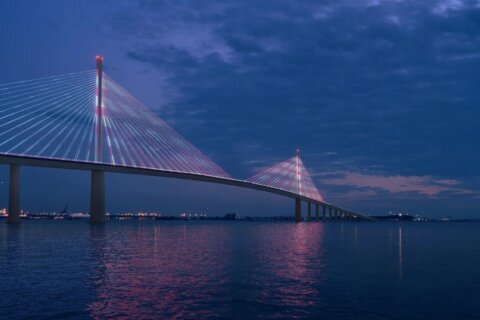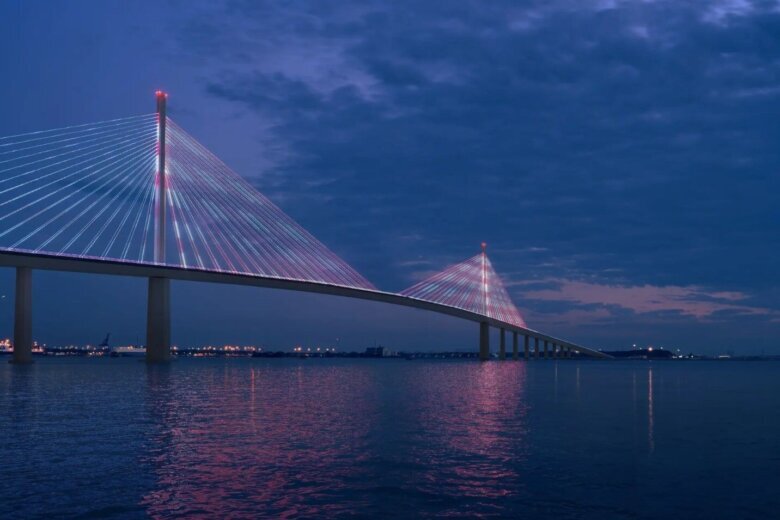
Read more about the latest on the Key Bridge collapse and recovery in Baltimore.
With the aggressive goal of rebuilding the Francis Scott Key Bridge in Baltimore by fall 2028, some companies are vying for the $73 million contract for the project development phase.
The Maryland Transportation Authority’s deadline for proposals was Monday, and the agency expects to choose the project team by mid-to-late summer. On March 26, 2024, the cargo ship Dali lost power and rammed a pylon of the bridge, plunging much of the crossing into the Patapsco River and killing six construction workers.
While details of submitted proposals are limited, the Request For Proposal documents, released on May 31, can provide some clues as to what features the new Baltimore Key Bridge would be likely to have.
In its guidance to construction and engineering companies, MDTA said alternative structure types consistent with the goals would be considered.
The transportation agency said it is working with the U.S. Coast Guard to determine the under clearance of the new Key Bridge, as well as the Bay Bridge, to make sure they are consistent.
For vehicular travel, MDTA said, “The new bridge will have the same number of travel lanes, but wider shoulders to bring the structure up to current interstate standards.”
In the possibility of designing a new bridge as multimodal — for instance, with cars and trucks on an upper deck, and light rail on a lower deck — MDTA said the new bridge should meet current interstate standards, with no increase to capacity.
However, given the possibility of a new bridge deck containing a bicycle or pedestrian path, in addition to cars and trucks, “the reasonableness and feasibility of a shared use path will be considered” in the process of reviewing proposals, MDTA said.
While procurement rules preclude MDTA from discussing the proposals that have been submitted, at least one company, Italy-based Webuild, and its U.S. subsidiary Lane Construction issued a news release last month, sharing a vision for a new Key Bridge.
According to Webuild, “The navigable clearance, the space that a ship can occupy to pass under the bridge, will be 213 feet, which is much greater than that of the collapsed bridge. The bridge span will also be enlarged to about 2,300 feet, with the main pylons positioned in much shallower water and away from the navigation channel.”
The proposal submitted by Webuild was for a cable-stayed bridge, in which one or more towers have cables that support the bridge deck.
President Joe Biden has pledged that the federal government will pay for building a new bridge.
“President Biden made clear from that first day and those early hours that the federal government would do everything that we could to support the city, the county, the state to get the Port of Baltimore back open and to get that bridge rebuilt,” U.S. Transportation Secretary Pete Buttigieg said on June 12, appearing with Maryland Gov. Wes Moore, to celebrate the reopening of the Port of Baltimore.
Moore and MDTA have repeatedly said the project is slated to be completed by fall 2028.
Get breaking news and daily headlines delivered to your email inbox by signing up here.
© 2024 WTOP. All Rights Reserved. This website is not intended for users located within the European Economic Area.









